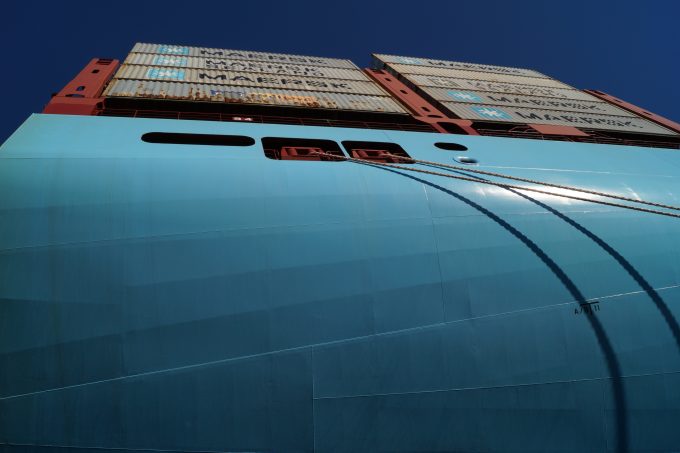Tighter EU import requirements proving 'a challenge' for forwarders
“Stricter Customs regulations” from the EU’s ICS2 will see “stricter enforcement”, Hapag-Lloyd has warned, and ...

Another container ship has spilled up to 750 boxes into the sea, just weeks after the ONE Apus lost around 1,900.
Maersk Essen, enroute from Xiamen to Los Angeles and carrying up to 13,092 teu, reportedly during severe weather, lost a “very significant number of containers overboard in the Pacific Ocean on 16 January”, according to cargo casualty management company WK Webster.
According to FleetMon, up to 100 floating containers are drifting north-west of Honolulu.
While it is thought up to 750 containers may ...
Trump tariffs see hundreds of cancelled container bookings a day from Asia
'Disastrous' DSV-Schenker merger would 'disrupt European haulage market'
'To ship or not to ship', the question for US importers amid tariff uncertainty
'Chaos after chaos' coming from de minimis changes and more tariffs
List of blanked transpac sailings grows as trade war heats up and demand cools
EC approves DSV takeover of DB Schenker
Forto 'sharpens commercial priorities' as it lays off one-third of staff
Shippers in Asia restart ocean shipment bookings – but not from China
India withdraws access for Bangladesh transhipments, in 'very harmful' decision
'Tariff hell' leaves industries in limbo – 'not a great environment to plan'
IndiGo fleet expansion plan will include a major push to boost cargo volumes
Pre-tariff rush of goods from US to China sees air rates soar, but not for long
De minimis-induced ecommerce demand slump could cripple freighter operators
'Restoring America's maritime dominance' – stop laughing at the back of the class
Hapag 'took the bigger risk' when it signed up to Gemini, says Maersk
Navigating tariffs: 'like trying to solve a Rubik's cube while colour-blind'

Comment on this article
Elizabeth Brand
January 22, 2021 at 7:29 amLearning just today, that this is unusual occurrence.
Carelessness such as this must be regulated to avoid harming our environment.
Capt SPARROW
January 23, 2021 at 4:12 amWhile detailed investigation on these accidents are being carried out, I would like to offer a plausible technical view point:
Today’s mega container ship designs feature a wide beam and large bow and stern flares in order to carry more containers above the load waterline, while still minimizing resistance with a streamlined underwater hull. In moderately high head or stern seas, the stability varies due to the changing water plane area as the position of wave crests travel along the hull. When the bow is down due to moderate pitching coupled with a slight roll, the large flare is fully immersed in the wave crest. The restoring buoyancy force plus the wave excitation force “pushes” the ship to the other side when the vessel is very “tender” due to changing stability at this instant. A similar action will happen on the other side as the bow pitches down in the next cycle. This repeated pumping action, which can lead to increasingly large roll angles within a few cycles even in moderately high head or stern seas, is called “parametric roll”.
These unexpected events are contradictory to normal seamanship practice. While captains are trained to head the vessel into the sea to reduce synchronous rolling when close to the natural period of roll, doing this only exacerbates the situation and frequently leads to container damages or lost overboard due to excessive accelerations and lashing failures. Furthermore, design criteria of lashing system on these ultra large container ships are often less stringent than those for smaller container ships because of their huge size. ( BTW, there is no unified IACS rules on container ship design, shipyards can choose the classification society which offers the best deal. )
However, once a vessel is in roll resonance, the wave energy will keep pumping into the system, resulting in excessive accelerations as great as the smaller size container ships. Unless mitigating strategies are implemented in lashing, weather routing algorithm to avoid such conditions and provide real-time warning plus seakeeping guidance to officers on watch, such accidents will continue to occur. The reason why we don’t see many similar accidents in previous years is because most of these large container ships were lightly loaded due to lack of cargo. Now these ships are fully loaded. Parametric roll resonance comes into play when the large bow flares are immersed in waves due to ship motions.